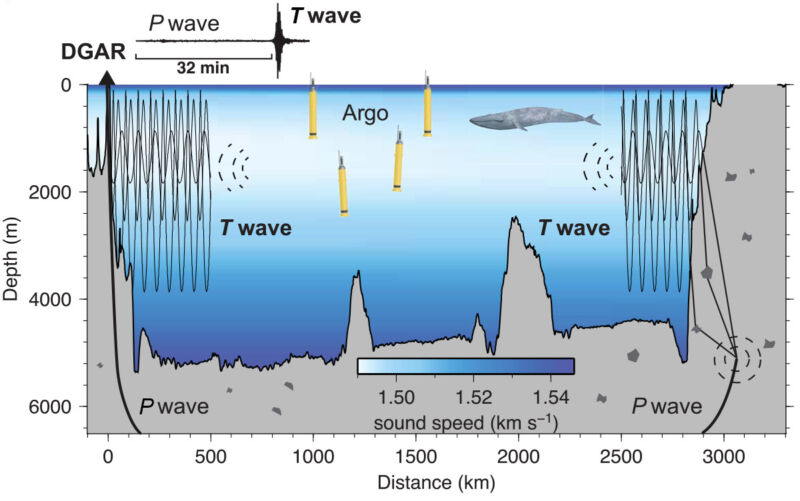
Enlarge / A seismometer on the atoll of Diego Garcia (left) can calculate ocean temperature with earthquakes near Sumatra (right). (credit: Wu et al./Science)
Geophysics has shown that precise measurements and a little modeling can perform wonders, like showing us the detailed structure of the Earth’s interior despite the fact that it is inaccessibly buried beneath hundreds of kilometers of rock. This is possible because seismic waves produced by earthquakes subtly change velocity or direction as they pass through different materials. A new paper shows that something similar can actually measure small temperature changes in the deep ocean.
An idea to use acoustic waves from man-made sources was actually floated several decades ago but died out after some trials. A team led by Wenbo Wu at the University of Toronto realized that earthquakes could be taken advantage of in the same way, removing the expensive logistics of constantly setting off booms to get measurements, as well as concerns about the effects on marine life.
There are actually several types of seismic waves released by earthquakes, and each behaves a bit differently. The P-wave (P for “primary” because it’s the first to arrive) is analogous to a sound wave, as it compresses the rock in the same direction it’s traveling. So where this wave reaches the seafloor or the ground surface, the rock can behave like a massive speaker, producing a very low-frequency sound wave in the air or water.
No comments:
Post a Comment